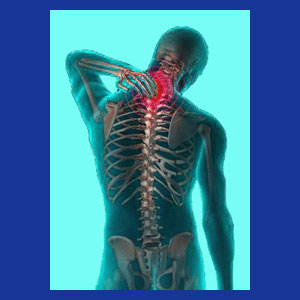
Neck muscle spasm describes an uncontrollable tightening of a specific soft tissue structure that might be unbearably painful to endure. The anatomy of the neck features many major and minor muscles, any of which might be affected by spasms due to several possible causations. Although the neck is not known as the worst location to suffer dorsal spasms, when these events occur, they can still be horribly symptomatic. However, it should be noted that not all spasms are painful. In fact, some are completely harmless and merely involve involuntary motion of a muscular structure, rather than extreme tensioning.
This essay focuses on explaining the occurrence of muscular spasms in the neck and also provides guidance on effectively treating these soft tissue irregularities.
Neck Muscle Spasms Explained
Spasms indicate involuntary movement of a specific muscular structure or a regional area composed of a muscular grouping. The typical muscle spasm involves a powerful contraction that is commonly called a cramp in the neck.
The least symptomatic spasms are usually neurological in nature and cause the muscle to jump repeatedly or contract slightly, but not painfully. The most extreme spasms can continue unchecked for an extended timeframe and might be agonizing to experience. Some of these types of painful expressions are completely debilitating. Many cramps result in locked musculature, so commonly seen in torticollis conditions. The worst spasms can create far worse effects than simple pain. Here are some of the other possible consequences of spasms in the neck muscles:
Muscles might lock down on or around a neurological tissue. This can cause a compressive neuropathy condition, also called a pinched nerve. When this occurs in the brachial plexus or cervical plexus, significant neurological symptoms might result, in addition to the pain from the spasm itself. Powerful major muscle spasms can reshape the spinal anatomy. Common effects include the possibility of an exaggerated lordotic curvature, called hyperlordosis, a reduced lordotic curvature, called hypolordosis, a reversal in cervical lordosis, called cervical kyphosis, or the occurrence of cervical scoliosis. The most extreme spasms can actually tear muscles or detach them from their anatomical anchors. These scenarios sometimes require invasive surgical correction to resolve.
What Causes Neck Spasm?
Muscle spasms can result from many common and several rather rare causations. Here are some of the usual explanations for spasms to occur in the neck:
Injury can cause a muscle to go into spasm. Trauma, such as whiplash, often creates spasms immediately or when the inflammatory process reaches critical mass.
Spinal pathologies, such as compressed nerves or a compressed spinal cord, can enact spasms in many areas of the body, including close to where they actually occur in the cervical region.
Some disease processes involve spasms that are occasional or regular parts of the expressed symptom set.
Regional ischemia is a leading cause of muscular spasms. This type of oxygen deprivation can be caused by circulatory problems or mindbody interactions. Psychogenic ischemia is an epidemic problem that can generate a great number of symptomatic health issues. Regardless of the nature of oxygen deprivation, spasms usually only occur during peak acute periods of ischemia.
Neck Muscle Spasm Treatment
Chronic or recurrent non-painful spasms should be evaluated to be sure that they are not the direct result of some pathological disease process or other serious cause, such as a spinal tumor. If they are found to be idiopathic or benign, these types of muscular contractions typically require no medical care whatsoever.
Painful spasms should also be evaluated and the underlying causation treated. Since many possible sources of these symptom-generating spasms can exist, treatment will rely completely on the causative process. However, for first aid, patients are usually advised that the following practices might be helpful in relieving the agony of a terrible neck spasm:
It is vital to stay relaxed. Getting tense and stressed will only make the muscular contractions worse.
Try to find the most comfortable position and stay as calm as possible. This alone can often make the worst spasms pass quickly.
Patients with recurrent or chronic spasms might find relatively fast relief from taking muscle relaxants. While this path of treatment is acceptable for occasional acute flare-ups, it is a dangerous long-term solution, since these substances entail serious health risks.
Some patients find quick relief using massage, even if it means rubbing the area vigorously by themselves.
Ice or heat may or may not provide any benefit, but should be not exacerbate the condition, unless it is caused by fresh injury. In the latter case, ice alone should be used at first, since heat might worsen the inflammatory process if utilized in the first 24 to 48 hours.
Neck Pain > Neck Muscle Pain > Neck Muscle Spasm





